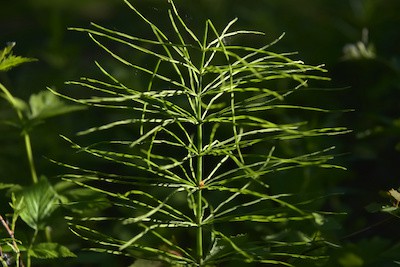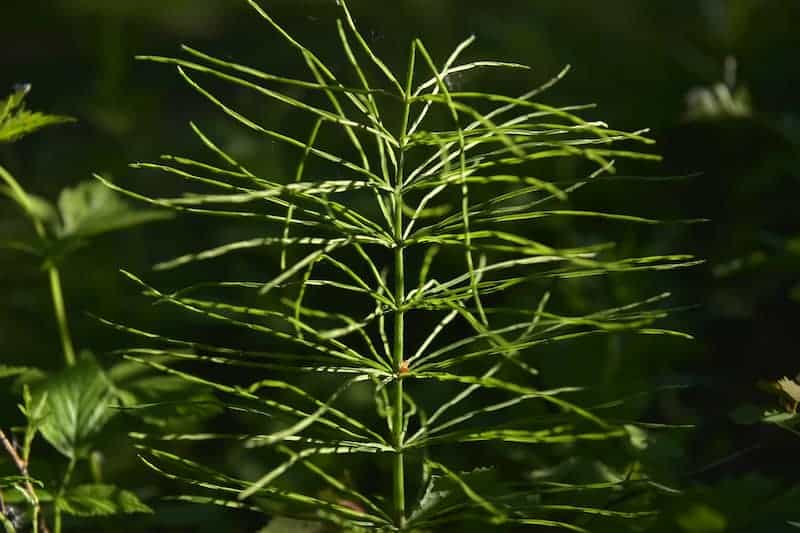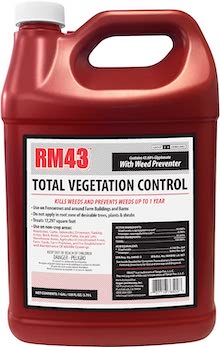Essential Guide to Killing Horsetail Weed
Recently, I noticed my garden had been subject to a rising population of horsetail weeds. I tried many times to get rid of it, but it continued to return. So, I did some digging to find out how to kill horsetail weed, and this is what I found.
So, how do you kill horsetail weed? To kill horsetail weed, it takes a combination of things. First, you must effectively kill the existing plant with a herbicide. After killing the plant, it requires consistent killing or it will try to come back from the roots. To effectively kill with an herbicide, it may be helpful to first damage the plant with a break for easier penetration.
Horsetail weed is incredibly resilient and will surely do its best to grow year after year, no matter what method you use to eradicate it. From herbicides to digging up the roots and everything in between, this hardy weed is known for its ability to bounce back and grow almost no matter what you throw at it. This is why many farmers, gardeners, and homeowners try for years to eradicate it without any success. However, there are a few tried and true ways to get rid of the weed.

Best Ways To Rid Your Yard of Horsetail Weed
Like many weeds, horsetail weed does not belong in the lawn, the garden, around your HVAC unit, or really anywhere. Though horsetail is not the most unsightly weed of all, it still poses issues. For example, horsetail in a pasture can be dangerous for horses and lead to many health complications if ingested. For thousands and thousands of years, mankind has tried to eradicate the plant with hardly any luck. This is due to the plant’s amazing ability to grow from its roots as well as spread its spores efficiently.
One way to kill horsetail weed is by spraying it with a weed killer. Of course, some techniques will lead to better results. Because of this, it is important to familiarize yourself with the best process before tackling this task. For example, spraying the waxy stems of horsetail weed with weed killer may not lead to death. The wax will prevent the weed killer from penetrating the plant. For this reason, it is not uncommon for people to damage the horsetail weed with a rake or other tool. This will open up the plant and allow the weed killer to better penetrate the plant.
It is not always effective to dig up horsetail weed, as this can actually spread the plant. By cutting the roots with a shovel, you will effectively encourage the roots to propagate new horsetail shoots. This is also a common mistake of individuals who have killed the plant with an herbicide. If you attempt to dig after killing the plant, you will effectively reverse your progress by spurring the roots to grow new horsetail. The plant is extremely persistent and any misstep will provide an opportunity for it to grow.
For this reason, it is incredibly crucial that no matter what way you choose to attempt eradicating horsetail from your property, you follow it up and stay on top of it. Horsetail weed an incredibly persistent grower. However, it also grows quickly. If you do not stay on top of the treatment, a new patch of horsetail will have grown and established itself before you notice.
What Is Horsetail Weed?
Horsetail weed is a common invasive weed that grows all over the world. The hardy plant has hard stems and small branches, It can grow in a variety of places, from wet, marshy areas to sandy and even clay-covered ground. Because of this, the plant quickly spreads due to the spores that are easily carried by the wind. A variety of attempts to kill horsetail weed are made every year. However, most attempts fail due to the plant’s inherent ability to push through.
Horsetail weed gets its name from its appearance. The ends of the plants have a brushy appearance that is similar to that of a horse’s tail. Coincidentally, the plant is harmful to horses if ingested and can cause a variety of health issues. This is why many farmers do their best to control the horsetail weed population inside their pastures and farmland. Plus, the weed is very unsightly.
What Type of Weed Killer Should You Use on Horsetail Weed?
In general, you will most often see glyphosate recommended to kill horsetail weed. Of those recommendations, most suggest a fifty percent mixture of glyphosate in water. This has been proven to be an effective way of killing horsetail weed. Glyphosate is also a typical ingredient in many over-the-counter weed killers that can be found at your local hardware store.
Just look at the ingredients to know that you are indeed buying a product with glyphosate. Some people suggest actually injecting the glyphosate mixture into the plant itself. However, as this is quite time-consuming, you can also spray the solution onto the plant. However, you may experience more success if you first damage the plant to allow for better penetration.
You should always consult with the manufacturer’s instructions when using weed killer. It can be harmful to pets, humans, and even your lawn if used improperly. In addition to safety concerns, weed killers will not be effective if used incorrectly. If you find that weed killer is not effective in killing weeds, this could be caused by a variety of things.
One of the most common reasons weed killer is not effective is because it is improperly mixed. Pay close attention to the manufacturer’s recommended mixing strength and mix accordingly. Over-concentrated weed killer will be effective but is a waste of money and a greater health concern. Under-concentrated weed killer is likely not going to kill the weeds. Other times, weed killers are not effective because they do not have ample time to soak into the plant and dry. If you apply weed killer before rainfall, it will likely wash off of the plants and prove ineffective.
Organic Ways to Kill Horsetail Weed
If you are not a fan of chemicals and weed killers, you may be interested in natural and organic ways to kill horsetail weed. Unfortunately, there are not many natural ways to kill the stubborn plant. However, there are a few methods you can try.
Luckily, if the horsetail is coming up in a lawn, regular mowing will take care of the population and keep it from establishing itself. Mowing an established horsetail weed is not recommended. This is because mowing will only spread the spores and worsen the already difficult problem.
Block Sun & Oxygen
If the horsetail weed is springing up in areas where are you unable to mow, you will have to find other ways of naturally eradicating the weed. One way to kill horsetail or virtually any unwanted plant is to smother it. You can use a landscaping mat, a tarp, or even a black trash bag to effectively block the sun from reaching the plant. This is an effective way to kill the horsetail weed, but it may take longer than herbicides.
Because horsetail weed thrives on the sun, you are unlikely to find it in shaded areas of your yard such as under trees or around your Jenks HVAC system.
Pull & Dispose of Horsetail Weed
You can also attempt to cut or pull the horsetail weed. If you do so, it is recommended that you do not dispose of stalks and roots carelessly. To keep the invasive plant from spreading, do not throw it away, add it to compost piles or dump it. Instead, burn the plant or allow it to completely decompose in a container.
While horsetail weed is certainly a nuisance for homeowners hoping to achieve a lush lawn, there are ways to fix your lawn full of weeds!
 Related Questions
Related Questions
What’s the difference between horsetail and marestail? Though often used interchangeably, horsetail and marestail are actually different weeds. First off, horsetail is a perennial while marestail is an annual. Secondly, marestail will eventually flower, and horsetail never flowers.
If confused, people will soon tell the difference between horsetail and marestail if they try to kill the weed using a glyphosate solution. Unlike horsetail weed, the marestail will stand up against a glyphosate-based weed killer. One of the main defining qualities of horsetail weed is its silica content. On the other hand, marestail contains no silica.
Are weed killers safe to use? Weed killers are an incredibly effective scientific development that are commonly used across the world. Weed killers are generally considered safe when used properly and according to the instructions provided by the manufacturer. When using a weed killer, practice common sense, but also always read the manufacturer’s instructions and adhere to the guidelines presented on the label. This will give you the most success when using the product and keep you, your family, and your pets safe.
Thank you for reading American Lawns! Find more lawn care tips from experts here.



